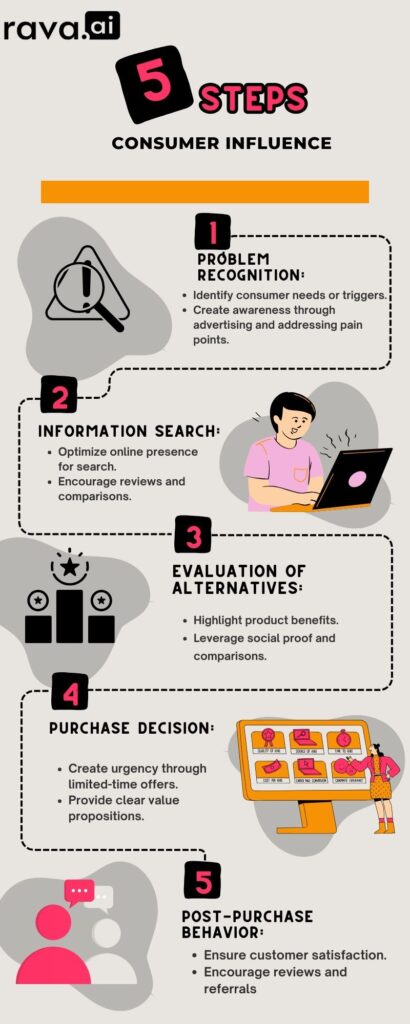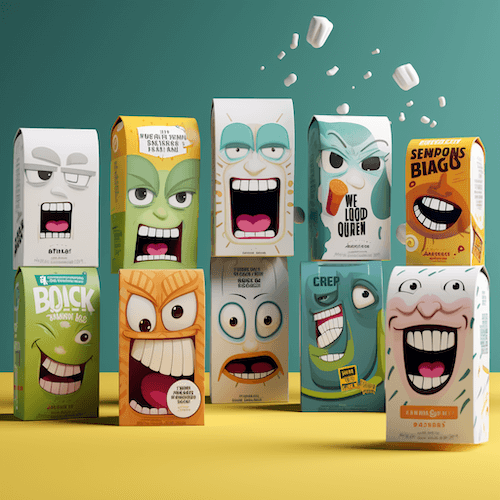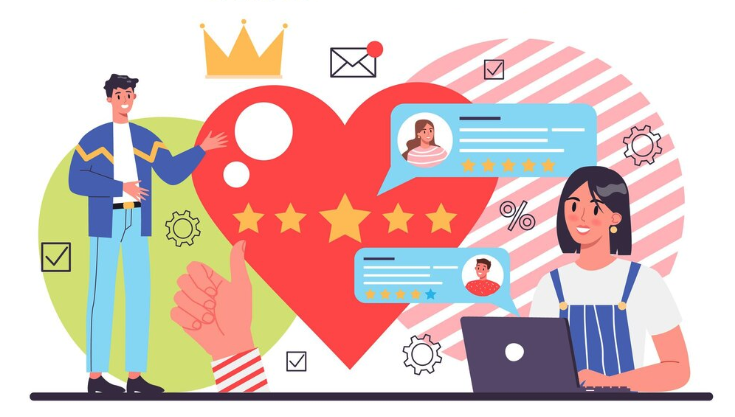Understanding Consumer Psychology: How Do Consumers Make Decisions?
“Ever found yourself in a funk, scrolling through online stores, and suddenly feeling the urge to buy something new? But have you ever wondered if there’s more to this ‘retail therapy’ than just a momentary pick-me-up? Let’s delve into the fascinating world of consumer psychology to uncover the true relationship between emotions and spending.”
Studies suggest a complex relationship between emotions and spending. The “retail therapy” phenomenon taps into the brain’s reward system. Buying something new triggers the release of dopamine, a neurotransmitter associated with pleasure and motivation. This temporary mood boost can be appealing, especially when feeling low. Similarly different moods can influence our buying patterns.
“Curious to learn more about CONSUMER PSYCHOLOGY? Don’t miss out on the juicy details! Head over to the blog for the full scoop and dive into the good stuff. Click here to keep reading!”
By analyzing how consumers think, feel, and make decisions, businesses can better identify customer needs and motivations. Understanding this consumer psychology is critical for influencing behaviour and decision-making. Consumer psychology examines the roles played by emotions, perceptions, preferences, and biases in shaping consumers’ buying decisions and consumption patterns. It provides valuable insights that can inform the development of marketing strategies and help craft targeted branding, advertising, and messaging that resonates with consumers on a deeper level.
Fundamentally, consumer psychology demonstrates that purchasing decisions are not always completely rational. They are often influenced by emotions, societal pressures, cognitive limitations, memories, and psychological biases. Knowing how these factors work allows marketers to utilize them to build relationships with consumers and turn them into loyal customers.
The brain’s use of mental shortcuts or rules of thumb known as heuristics also shapes buying behavior. Consumer psychology explores frequently used mental shortcuts such as the availability heuristic, the anchoring effect, and the tendency for loss aversion. By tapping into these tendencies, businesses can predict and guide customer purchasing choices.
Overall, a data-driven approach to consumer psychology will empower any organization to enhance customer experience, increase conversions, spur habit formation, and expand market share. This article will explore key concepts in consumer psychology and reveal how they can be applied to marketing and business growth strategies.
Consumer Decision-Making Process
Consumer decision-making is a process that involves going through a series of stages before a purchase is made. Understanding this process allows marketers to identify opportunities to influence behaviour at each stage.
The consumer decision-making process consists of five key stages:

Problem Recognition
Problem recognition is the first stage in the consumer decision-making process. This is when the consumer recognizes a problem or need that can be solved by purchasing and consuming a good or service. Several factors can trigger problem recognition:
- Actual state vs ideal state – Problem recognition often occurs when consumers realize there is a gap between their actual state and their ideal state. For example, a person notices their old mobile phone lacks features found in newer models. This makes them recognize a need to upgrade.
- Consumption cues – Seeing a product used by others or advertised can prompt a consumer to recognize a new problem or need. For instance, a person may not realize their current laptop lacks processing power until they see an ad for a newer laptop with improved speed and graphics.
- Change in circumstances – Changes in a consumer’s circumstances, like a new job, marriage, or child, can create new needs to be fulfilled. Someone who previously lived alone may recognize a need for more space when they get married.
- Stockout – Running out of a product or consumable item signals it needs repurchasing. Finishing up detergent prompts the need to buy more.
By understanding problem recognition triggers, businesses can purposely activate the needs and desires of their target audience through carefully crafted promotional messages and product displays. This gets consumers primed to seek solutions, setting the decision-making process in motion. A makeup ad might convince someone they need the advertised anti-ageing products.
Influencing Problem Recognition
Some strategies to influence problem recognition and make consumers turn to your brand for solutions include:
- Using messaging to highlight problems consumers may not know they have. A classic example is Listerine’s campaign about bad breath. They introduced consumers to a problem they were previously unaware of.
- Creating innovative products that provide solutions to unmet needs. When consumers didn’t realize they needed on-the-go entertainment, Sony created the Walkman. Their product defined a new problem to be solved.
- Reframing situations as problems. Insurance companies have reframed death as a financial burden on loved ones to drive interest in life insurance policies.
- Leveraging current events to spark concerns. During times of economic uncertainty, promotions about job security or financial planning services aim to trigger worries.
- Remarketing to reengage lapsed consumers. If someone hasn’t ordered from you lately, targeted ads can spark problem recognition by reminding them of their previous positive experience.
- Encouraging consumers to envision an ideal state. Weight loss companies often have consumers visualize their perfect beach body. The contrast with their current state sparks the need to take action.
The key is understanding your audience deeply enough to know which problems or needs will capture their attention. With the right triggers, you can prompt consumers to recognize issues that your brand can then help resolve.
Information Search
Once a consumer recognizes a problem or need, they start searching for more information to help make a decision. The information search can be both internal and external.
Internal search involves the consumer identifying relevant knowledge they already have stored in their memory. This could include past experiences purchasing a similar product, advertisements they have seen, interactions with brands, and conversations with friends or experts. The consumer may reminisce about these memories to gather insight.
External search occurs when existing knowledge is insufficient, so the consumer starts an active investigation to find more information. This typically involves looking into product specifications, pricing, comparisons, and reviews. External search utilizes both marketer-dominated sources like advertisements, salespeople, websites, and packaging, and consumer-dominated sources like reviews, product rating sites, forums, and friends and family recommendations.
The aim of the information search is to gather more information about the available choices. Businesses want their brands and products to appear prominently during this information search stage. They can achieve this by having educational yet persuasive content across owned media like blogs, videos, and social media. Monitoring review sites and interacting on forums also raises visibility. Paid media like search ads and retargeting help brands appeal to consumers while they are actively searching for information externally online.
Influencing Information Search
Here are several strategies to get customer attention, make it into their initial consideration set and become part of the options evaluated:
- Search Engine Optimization (SEO): Optimizing your website and content for relevant keywords will help you rank higher in organic search results. Conduct keyword research to determine terms and phrases your target customers are likely to search when looking for solutions.
- Paid search ads: Purchasing paid ads on search engines and optimizing them based on keywords can ensure your brand appears at the top of search results. Geo-targeting your ads can also help you appear for local searches.
- Social media presence: Maintaining an active social media presence gives you another channel to connect with customers during the information search process. Build a following on relevant platforms like Facebook, Instagram or LinkedIn. Utilize hashtags, tags and keywords to ensure your content surfaces when users search those topics.
- Retargeting: Use pixels and cookies to track site visitors and then show relevant ads to them as they visit other websites. This keeps your brand top of mind during their information-gathering process.
- Product reviews and comparisons: Proactively seek out reviews on platforms like Yelp and Google Business. Respond professionally to feedback. Submit your products to comparison sites like CNET to be evaluated.
- PR outreach: Pitch your company’s products, services or expertise to relevant media outlets. Earning press mentions helps build brand awareness and authority.
- Referral marketing: Encourage existing happy customers to recommend your brand to others. Word-of-mouth referrals are very influential. Consider rewards for referrals.
The key is ensuring your brand is discoverable and visible across multiple touchpoints during the research process. Provide informative and helpful information to become part of the consideration set.
Evaluation of Alternatives
Once consumers have gathered information about potential solutions, they enter the evaluation stage. This involves analyzing their options and comparing them to make the best choice. At this stage, the consumer compares the choices available and weighs up the pros and cons of each option. Factors like price, quality and features are considered. The consumer ranks and evaluates alternatives to determine the best fit for their needs. Several factors influence how alternatives are evaluated:
- Features vs. benefits – Consumers don’t just look at product features, but consider the benefits those features will provide. Marketers should emphasize the benefits in messaging.
- Ease of imagining using the product – Options that are easier to imagine will be favoured. Using vivid language, videos, and imagery helps consumers picture themselves with the product.
- Cost-benefit analysis – Consumers weigh the expected value vs the costs of each option. Marketers can influence perceived value and address potential costs.
- Comparison to competitor products – Options are considered relative to competitive or substitute products. Positioning against competitors helps frame the evaluation.
- Compatibility with needs, values, and lifestyle – Consumers evaluate fit with their lives. Messaging should connect to consumer goals and preferences.
- Potential risks – Consumers are risk averse and consider downsides. Marketers should address concerns and emphasize product quality.
- Opinions of friends, and influencers – Word-of-mouth and reviews shape perceptions of quality and value. Leveraging influencers and social proof is persuasive.
Understanding how consumers weigh alternatives allows marketers to tailor messaging and positioning to guide the evaluation process favorably.
Influencing Evaluation of Alternatives
During the evaluation stage, consumers assess and compare the options to make a selection. Several psychological techniques can be leveraged to shape this evaluation process and nudge consumers towards your product or service.
- Framing – presenting the same information in different ways guides the consumer towards a particular decision. For example, ground beef could be labelled as “80% lean” versus “20% fat”. Both are factually accurate but trigger different evaluations. Highlighting the positive frame of 80% lean casts the beef in a healthier light.
- Anchoring is another influential tactic. Providing an initial reference point, or anchor, skews consumers’ perceptions of value. Setting a higher initial price and then showing a sale price makes the discount seem larger. The original anchor price shapes the consumer’s idea of a reasonable cost.
- Strategic use of default options is also effective. Making a particular choice the default taps into people’s tendency to accept pre-selected configurations. For instance, a website could default to a higher-priced monthly subscription plan, and more consumers will stick with this option.
By understanding common mental shortcuts and biases, marketers can carefully design customer experiences to encourage favorable evaluations of their offerings.
Purchase Decision
A consumer’s final purchase decision is influenced by two main factors – psychological and situational influencers.
On the psychological side, motivation, perception, attitudes, and brand loyalty play a role in which option a consumer chooses. Highly motivated buyers are willing to put in more effort and time to evaluate choices. They rely more on information and less on intuition. Perception also guides decision-making. If a product is perceived favourably and aligns with the consumer’s self-image and values, they are more likely to choose it.
Product attitudes also sway decisions. Consumers choose options with attributes they view positively over ones perceived negatively. Finally, brand loyalty often leads to repeat purchases without an in-depth decision process.
Situational factors like time pressure, financial circumstances, and social surroundings also impact final purchase selections. When under time constraints, buyers opt for familiar products over conducting research. Limited budgets restrict options to lower-cost alternatives. And the presence of others can alter choices to align with social norms.
By understanding key influencers at the final decision stage, businesses can tailor strategies to sway product selection and conversion to their brand. Fine-tuning messaging to align with psychological drivers of choice and selecting appropriate sales situations are two approaches to tip the scales on purchase decisions.
Influencing Purchase Decision
Several techniques to directly influence a customer’s final purchase decision. Here are few of them:
- One of the most effective is creating a sense of scarcity or exclusivity. By making a product seem rare or only available for a limited time, it triggers a sense of urgency in shoppers and increases desire.
- Flash sales, one-day-only deals, and offers like “only 5 left in stock” take advantage of scarcity. Countdown timers are also commonly used on product pages or in email campaigns to indicate to customers that time is running out to get a discounted price.
- Another influential strategy is providing site-wide discounts or coupon codes for a short period. For example, an e-commerce company might offer 20% off all purchases for the 4th of July weekend. This incentivizes buyers to make their purchases during the promo window.
- Giving incremental discounts also works well, such as lowering prices by a small amount as more units are sold. This capitalizes on the psychological urge to not miss out on a bargain. Similarly, limited-time bundled pricing on complementary products can entice customers with the perceived extra savings.
Overall, these types of offers that are only available for a short duration or to a limited number of people are powerful motivators. By introducing some form of exclusivity, marketers can nudge customers towards making a purchase decision now rather than delaying or hesitating.
Post-Purchase Behavior.
After the purchase, the consumer assesses whether they are satisfied or dissatisfied with the chosen product/service. This will influence their future decisions and their brand loyalty. They may provide reviews or feedback to share their evaluation. Some of the post purchase behaviors include:
- Use and consumption – The consumer will use or consume the product or service. This stage is important for ensuring satisfaction.
- Cognitive dissonance – Consumers may experience doubts about their purchase decisions. Marketers should provide reassurance post-purchase.
- Sharing feedback – Consumers may share their experience with others through reviews, social media, recommendations etc. This creates opportunities for referral marketing.
- Product disposition – The consumer must decide how to dispose of the product. They may reuse it, recycle it, or throw it away.
- Post-purchase evaluation – Consumers evaluate how satisfied they are with the product and whether it meets their needs. This informs repurchase decisions.
- Customer service interactions – Any customer service issues will shape the post-purchase experience. Quick and helpful service increases satisfaction.
Understanding post-purchase behaviour allows marketers to manage the customer experience even after the sale is made. By providing reassurance, helpful information, and stellar service, they can increase satisfaction, loyalty, and brand reputation.
Leveraging Emotions
Emotions play a powerful role in consumer decision-making and behavior. Effective marketing taps into customers’ emotions and incorporates them into ads, campaigns, and product packaging. Emotional appeals can capture attention, influence perceptions, and drive behaviour.
Research indicates that advertisements and messages that evoke emotional responses tend to be more effective than those that solely emphasise features and practical advantages. Emotions frequently surpass logical reasoning. By triggering emotional reactions, marketers can bypass consumer defences. Emotional ads also tend to be more memorable.
There are two key ways marketers leverage emotions:
Emotional Appeals in Advertising
Ads often focus on invoking positive emotions like happiness, pride, humour, inspiration, romance, and even nostalgia. Emotional ads aim to connect the positive feelings associated with using a product or service. Brands also leverage aspirations and project certain identities customers want to have.
Negative emotions can also be powerful in advertising. Fear is commonly used for promoting security products, insurance, or advocating certain health behaviours. Guilt appeals encourage donations and prosocial behaviors. Provoking anger against competitors or social issues is another technique. The key is making the brand the solution to the negative emotion being felt.
Packaging and Product Design
Packaging aesthetics tap into emotions and desires for beauty. Special edition packaging can increase gift appeal. Unique bottle and product shapes are branded properties companies invest in, like Coca-Cola’s iconic bottle silhouette. Color psychology is leveraged to convey certain moods and tastes. Warm colors tend to stimulate appetite and cool colors can give an impression of refreshment or relaxation.
Leveraging emotions gives brands an edge over competitors just touting functional benefits. However, marketers must ensure the emotions align with the brand identity and values. Otherwise, emotional appeals may come across as inauthentic or manipulative. Ensuring consistency across campaigns and touchpoints helps reinforce emotional connections with customers.
Habits and Rewards
By understanding the psychology of habits, marketers can leverage tactics like rewards programs and subscriptions to influence customer loyalty and repeat purchases. Habits are formed when a behaviour is repeated frequently in a stable context. The habit loop consists of the cue, routine, and reward.
Marketers can leverage this by inserting their brand into the customer’s habit loop. For example, Starbucks has created strong habitual behavior through its rewards program. Members earn stars for each purchase which turn into free drinks and food rewards. This incentivizes customers to choose Starbucks again the next time they want coffee, strengthening the habit.
Subscriptions are another way to encourage repeat purchases by making it the default option. Amazon Prime is a great example. By paying an annual fee, customers get perks like free 2-day shipping. This makes them more likely to purchase frequently from Amazon versus other sites.
Using psychology to make customer behaviours habitual is an effective long-term approach. The initial rewards programs and subscriptions turn external motivation into internal motivation over time. Setting up the contextual cues and making the experience rewarding at each touchpoint leads to brand loyalty and recurring revenue.
Persuasion Techniques
Marketers can apply various persuasion techniques that leverage psychological principles and human biases. Two common techniques include:
Foot-in-the-Door Technique
This technique involves getting a small initial commitment which creates a tendency for the person to then agree to a larger request. The initial request acts as the “foot in the door” which influences compliance with subsequent demands.
For example, a free product trial acts as a small request that gets the customer’s foot in the door. This then makes them more likely to purchase the full product afterwards. Charities also use this technique by first seeking small donations which turn into larger donations over time.
Door-in-the-Face Technique
In contrast, this technique works by making an unrealistically large request first that is likely to be rejected. You then follow up with the actual, smaller request which suddenly seems reasonable in comparison.
An example is a car salesman who initially offers an expensive premium package with many add-ons. The customer is likely to turn this down, but may then accept the lower-priced model the salesman suggests afterwards. The initial, excessively high price serves as a “door in the face” technique, making the actual offer appear more reasonable and attractive.
Real World Examples
It’s useful to look at case studies of companies that have successfully leveraged consumer psychology in their marketing efforts. Here are some prominent examples:
Amazon 1-Click Ordering
Amazon introduced 1-Click ordering in 1999 which allows customers to purchase items with a single click, storing default preferences like payment and shipping information. This makes purchasing incredibly easy and taps into the consumer desire for convenience and impulse purchases. Studies found that customers were more likely to make repeat purchases on Amazon due to the frictionless 1-Click experience.
Starbucks Rewards Program
Starbucks coffee chain introduced a tiered rewards program where customers earn stars towards free drinks and food items. This taps into the psychological principles of variable rewards and reciprocity. Customers are incentivized to visit more frequently to continue earning rewards. The exclusivity of elite status levels also encourages customer loyalty.
Nike Running App
Nike’s running app leverages the principle of social proof and community.
By engaging with friends and sharing updates, users are influenced to keep running to avoid letting down their peers. The app also taps into competitiveness, goal setting and positive reinforcement to motivate usage. This drives brand loyalty and sales for Nike’s products.
Oreo 100th Birthday Campaign
When Oreo turned 100 in 2012, they launched a global integrated campaign focused on nostalgia and emotions. Advertisements reminisced about experiences sharing Oreos over childhood, activating fond memories consumers had with the brand. Sales increased substantially, showing the influential power of nostalgic emotions.
Coca-Cola “Share a Coke” Campaign
Coca-Cola printed popular names on their bottles and cans, encouraging individuals to find bottles with their names and share them with others. This tapped into the consumer desire for personalization, enabled social sharing, and created scarcity for less common names. The campaign was a huge success, especially with millennials who posted their personalized bottles on social media.
Conclusion
Consumer psychology offers powerful insights that can help marketing managers and business owners better understand and influence customer decision-making. By leveraging principles like cognitive biases, emotional appeals, persuasion techniques, and habit formation, brands can more effectively connect with consumers at each stage of the purchase process.
This overview covered key concepts in consumer psychology, broke down the five stages of the decision-making process, and provided strategies to tap into the unconscious needs and wants that drive purchases. Real-world examples demonstrate these principles in action, from Starbucks’ loyalty program to Amazon’s 1-Click ordering.
Now it’s time to assess your own marketing efforts. Ask yourself:
- How can I better align my messaging and campaigns to the consumer decision journey?
- What cognitive biases or emotions can I leverage in my branding and advertisements?
- How am I rewarding loyal customers and forming helpful consumer habits?
By integrating insights from psychology into your overall strategy, you’ll be better equipped to influence customer behaviour and grow your business. The mind of the consumer holds immense opportunity so use these psychology principles to unlock it.







